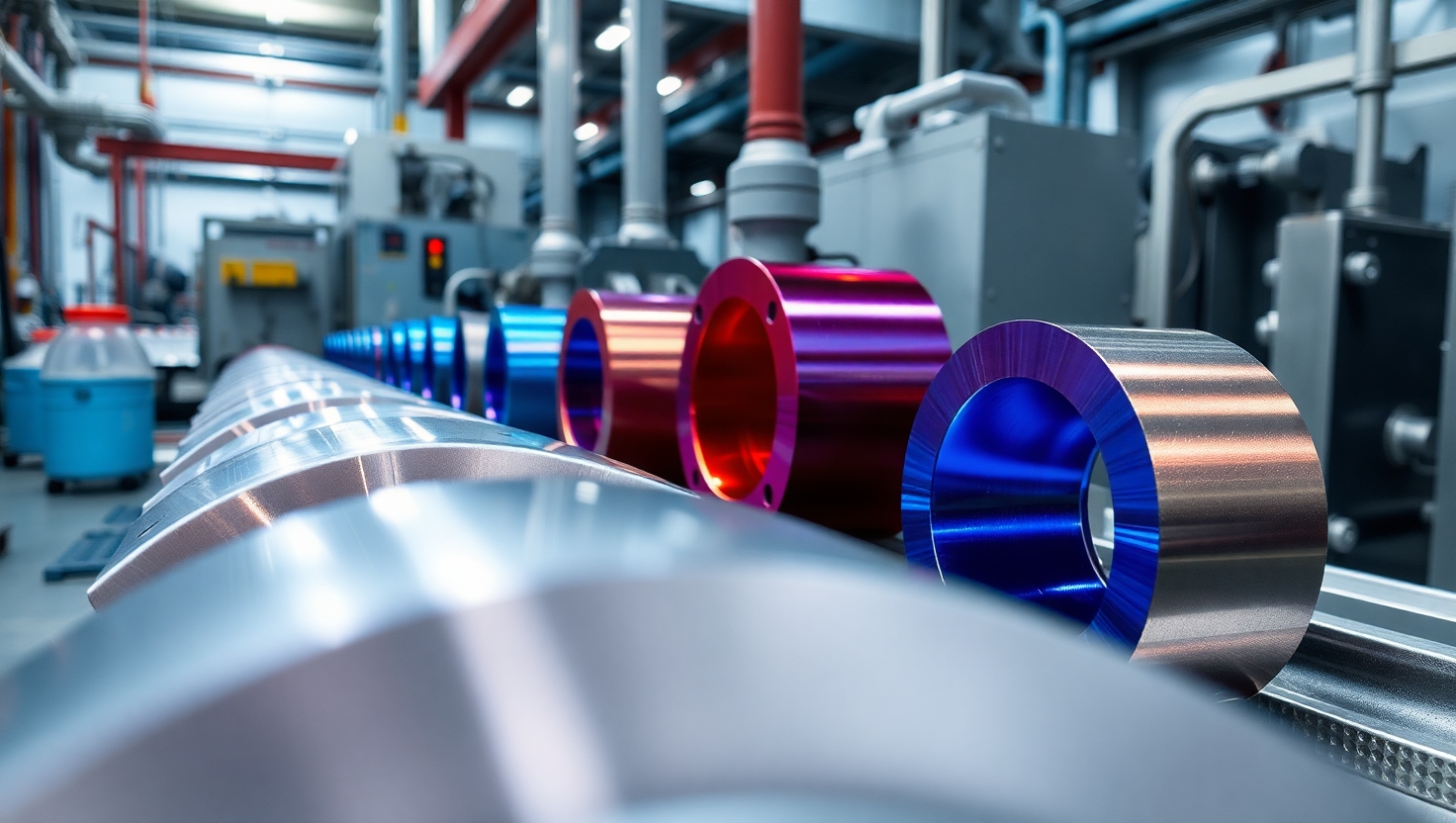What Is Aluminium Anodizing? Process, Benefits & Applications
Published by: ALUTimes | Date: July 10, 2025
Introduction
Aluminium anodizing is a surface treatment process that enhances the natural oxide layer on aluminium parts to make them more durable, corrosion-resistant, and aesthetically pleasing. This article explores how anodizing works, its benefits, and where it’s most commonly used—especially in modern architecture, electronics, automotive, and aerospace industries.
What Is Aluminium Anodizing?
Aluminium anodizing is an electrochemical process that converts the metal surface into a decorative, durable, corrosion-resistant oxide finish. Unlike coatings or paint, anodizing transforms the aluminium surface itself, creating a tough and long-lasting layer.
The Anodizing Process
- Cleaning: Aluminium is first cleaned to remove oils, dirt, and oxide residue.
- Etching: The metal is etched to give it a uniform matte or shiny finish depending on the application.
- Desmutting: A chemical bath removes smut residue from the etching process.
- Anodizing: The aluminium is placed in an electrolytic solution (usually sulfuric acid) and subjected to electrical current. This process thickens the natural oxide layer.
- Coloring (Optional): Pigments or dyes can be introduced during or after anodizing to provide color.
- Sealing: The surface is sealed in hot water or nickel acetate to close pores and enhance corrosion resistance.
Types of Anodizing
- Type I (Chromic Acid Anodizing): Used in aerospace for its thin coating.
- Type II (Sulfuric Acid Anodizing): Most common for architectural and consumer applications.
- Type III (Hardcoat Anodizing): Produces a thicker, more wear-resistant coating for industrial uses.
Benefits of Aluminium Anodizing
- Corrosion Resistance: Anodizing significantly improves resistance to weather and chemicals.
- Enhanced Aesthetics: Available in a variety of colors and finishes.
- Improved Durability: Hardcoat anodizing makes aluminium surfaces wear and scratch resistant.
- Environmentally Friendly: Non-toxic, long-lasting, and easily recyclable.
- Better Adhesion: Ideal base for painting or gluing components.
Applications of Anodized Aluminium
- Architecture: Curtain walls, window frames, and exterior panels.
- Consumer Electronics: Smartphones, laptops, and camera bodies.
- Automotive: Trim components, chassis parts, and wheels.
- Aerospace: Aircraft parts requiring lightweight and corrosion-resistant properties.
- Furniture: Modern furniture and kitchen appliances for sleek aesthetics.
Challenges and Considerations
While anodizing is effective, it’s important to note that it does not improve the strength of the aluminium itself. Also, the process requires precise control over voltage, temperature, and bath chemistry. Poorly executed anodizing may result in uneven coatings or color fade over time.
Tips for Maintenance of Anodized Aluminium
- Clean with mild soap and water—avoid harsh chemicals.
- Don’t use abrasive tools or brushes that may scratch the surface.
- Apply protective wax or coatings in marine or industrial environments.
Conclusion
Aluminium anodizing is a widely used process that significantly enhances the life, performance, and appearance of aluminium components. Its versatility and sustainability make it a preferred choice in multiple industries. As the demand for corrosion-resistant, lightweight, and aesthetically appealing metal grows, anodizing will continue to play a vital role in aluminium surface engineering.
Disclaimer
This article is for informational purposes only. ALUTimes does not provide engineering or manufacturing advice. Please consult a professional for technical specifications and industrial requirements.

